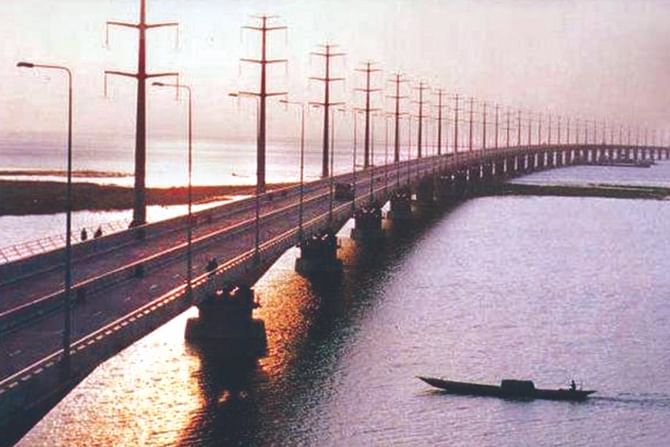Quality of building materials and construction

Why does it eventually take a gruesome catastrophe like Rana Plaza for us to be curious about the quality and integrity of the buildings we dwell in? After all these structures are meant to be “shelters” that we live, work and rest in seemingly protected from all adversities, or great investments with assured high rates of return. However, these very “shelters” may end up being the cause of all misery when deliberate or unknowing short cuts are taken in the design, material selection and construction and use of these building structures.
What building structure?
A mud wall house with a thatched roof is also a building structure. Lack of quality in its construction will lead to premature deterioration and may lead to eventual failure, causing loss of shelter and financial hardship, but very rarely to bodily harm. It is the heavier, more elegant, expensive building structures, often multistoried that has the potential of causing significant financial loss, bodily injury and death. Our focus is on these structures.
The shape and form of building structures are mostly defined by their intended usage. Residential, commercial, institutional or factory buildings usually have their unique forms, shapes, structure, façade, and building materials. What they have in common is the governing principles of Physics. A whole bunch of material stacked up in some logical formation that wants to come crashing down due to gravity, sway with cyclonic wind loads, shake in an earthquakes, and yet stays robustly intact due to a balancing internal forces within the slabs, beams, columns, walls and foundations. A building structure is expected to be designed and built to ensure that it can withstand the loads applied to it by generating the internal strength of its structural elements. This strength is directly proportional to the properties and quality of materials and the quality of construction.
Quality begins with design.
I am wrong. Actually quality begins and often ends with the owner. If the owner is not committed to quality and makes the folly of going “cheap” or “hasty” it becomes very difficult to ensure quality in design, material and construction. Assuming the owner appreciates the value of quality; the best start is with quality of the building design.
The design must take in to account the following:
a) Intended use of the building. This is what dictates the size and shape of floor areas, design loading on the structure, fire detection and fire-fighting design parameters, and eventually how the building functions and behaves.
b) The sub-soil condition of the building site for foundation design addressing the design loads including wind and earthquake load. Sub-soil investigation to appropriate depth is most important.
c) Aesthetics and user friendliness of the building depend on architectural design, but the safety of the building depends on structural design, and correct electro-mechanical design. It is easy to overlook the quality of engineering where aesthetics and prestige is paramount.
d) Building structures respond best to loads including wind load and especially earthquake load when they are structurally symmetric.
e) Cost cutting during the design and planning phases is not prudent, a folly often made by owners. The correct fees associated with architects and engineers are very nominal compared to the total investment.
Material Quality
The major building materials used for construction are as follows:
Structural materials: concrete, reinforcement bars, steel, bricks & mortar.
Finishing materials: floor tiles or stone, cladding, paint, aluminum sections, glass,
wooden doors & cabinets, etc.
Utility Service: electrical conduits & cables, circuit breakers, control switches, light fittings, pumps, plumbing, faucets, etc
Reinforced Concrete construction quality depends on the following:
a) Integrity, cleanliness, size grading of the crushed stone;
b) Size & cleanliness of sand;
c) Cleanliness of water;
d) Quality of cement;
e) Mix design ratio of stone:sand:cement and, the water:cement ratio.
f) Method and duration of mixing all ingredients.
g) Appropriate mode of carrying/pumping pouring and setting wet concrete.
h) Material, surface quality, dimensional tolerance, and adequate support of shuttering.
i) Curing throughout the period of strength gain, usually 28 days.
The best way to get quality concrete is to first establish a mix design of using well graded crushed stone. The most popular mix of stone:sand:cement for structural concrete is 1: 1½:3. With the same mix ratio one can get higher strength concrete by ensuring proper size gradation of the crushed stone, and adjusting down the water:cement ratio as much as possible. Construction personnel (contractors) are tempted to reduce the ratio of cement (the most expensive ingredient), and increase the ratio of water for ease of pouring and workability of concrete.
The reinforcement bars embedded within the concrete provide the tensile strength to the concrete slabs, beams, etc. The yield strength, elastic properties, bonding with concrete, and the ultimate breaking strength of the bars are most important. But it does not matter how good the material is, if the proper size, quantity and distribution of the bars across the concrete sections are not ensured. Construction personnel (contractors) are most tempted to compromise not as much on the quality, but on the quantity of steel reinforcements used.
Structural Steel construction quality depends on the following:
a) The strength and consistency of strength of structural steel; I-sections, L-angles, C-sections, which should be fabricated from hot rolled billets.
b) Efficiency and correctness of Joint design, often by welding, or bolting.
c) Welded joint strength depends on the welding material, type, and quality, which must be assured with consistent non destructive testing.
d) Bolted joint strength depends on the configuration, bolt material, and amount of tightening, which can only be ensured by using calibrated torque wrenches.
e) Sequence of construction, which done improperly may induce residual stresses.
f) Buildings constructed of structural steel are more flexible, and therefore better for earthquake design. However, the integration of steel frames to brittle elements such as infill brick walls and glass facades require special details.
The writer is Project Director, North South University.

 For all latest news, follow The Daily Star's Google News channel.
For all latest news, follow The Daily Star's Google News channel. 



Comments